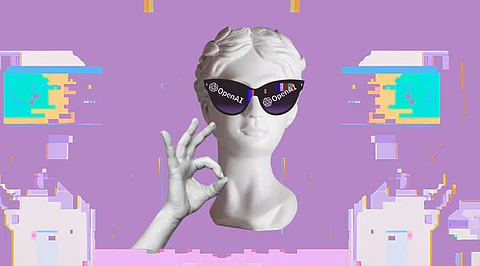
- Insights
- Cryptocurrencies
- Stocks
- White Papers
- Industry
- Geography
- Insights
- Cryptocurrencies
- Stocks
- White Papers
- Industry
- Geography


The tool sparked contestation among artists who batted what DALL- E, and other AI art creators like it, could mean for people in creative jobs.
OpenAI is now uniting with Microsoft on a new interpretation of Bing that includes an AI chatbot" more important" than ChatGPT. Like OpenAI's product, the new Bing has created a drama of its own. With ChatGPT, OpenAI's success seems impregnable for now. Take a look at some of the incipiency's other AI products.
Just months before ChatGPT launched, OpenAI removed the waitlist for its generative AI art creator, DALL- E. It snappily grew to over 1.5 million daily users.
DALL- E is a deep literacy AI that can take textbook prompts and turn them into digital images showing what was described. The AI was developed by OpenAI. The great thing about this new technology is that anyone can share this revolutionary way of creating images. The good news is AI art has advanced significantly in the last several months, and multi-limbed monstrosities are far less likely as OpenAI and others upgrade this new technology.
OpenAI blazoned the original DALL- E to the world back in January 2021, and DALL- E 2 was unveiled in April 2022, bringing advancements similar to advanced literalism, increased resolution (up to 2048 × 2048), and a more important AI.
Whisper is a web-based automatic speech recognition (ASR) system that was developed using 680,000 hours of supervised multilingual and multitask data. We demonstrate that using such diverse and extensive dataset results in enhanced resistance to technical language, background noise, and accents. In addition, it makes it possible to translate from multiple languages into English and perform transcription in those languages. To provide a foundation for the development of useful applications and further research into robust speech processing, we are open-sourcing inference code and models.
Users can download the open-source code for Whisper AI from GitHub and use it for their personal use. Importantly, Whisper AI installation and use do necessitate some technical expertise and resources.
We developed and launched GitHub Copilot a month ago in partnership with GitHub based on the Codex model. Codex, which is proficient in more than a dozen programming languages, is now able to interpret straightforward commands in natural language and carry them out on the user's behalf, allowing for the development of a natural language interface for existing applications. Through our API, we are now allowing developers and businesses to build on top of OpenAI Codex.
GPT-3 is a descendant of OpenAI Codex; Natural language and billions of lines of source code from publicly accessible sources, such as GitHub repositories, are included in its training data. OpenAI Codex excels in Python, but it is also proficient in more than a dozen other programming languages, including Shell, JavaScript, Go, Perl, PHP, Ruby, Swift, and TypeScript. It has 14 KB of memory for Python code, whereas GPT-3 only has 4 KB, allowing it to handle three times as much contextual information when performing any task.
OpenAI provides some examples of how Codex works, such as programming a space-themed game with the model and speaking commands to a computer to edit a Word document.
Simply Put is a place where we connect the dots to educate and motivate you. Sign up to receive a weekly email that unifies some news stories into a single coherent thought.
